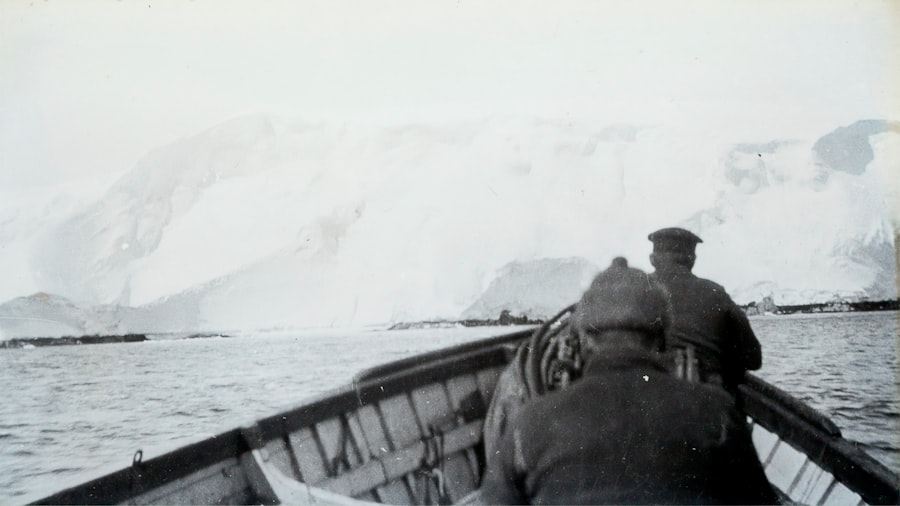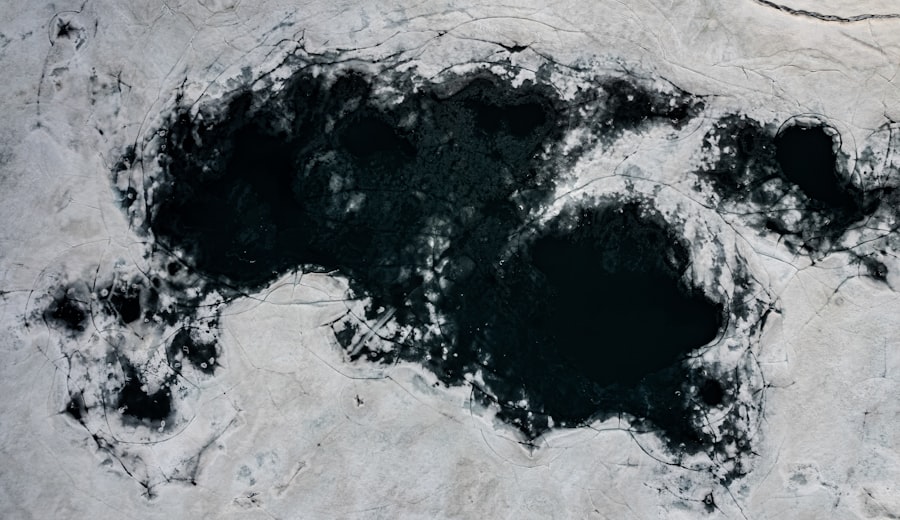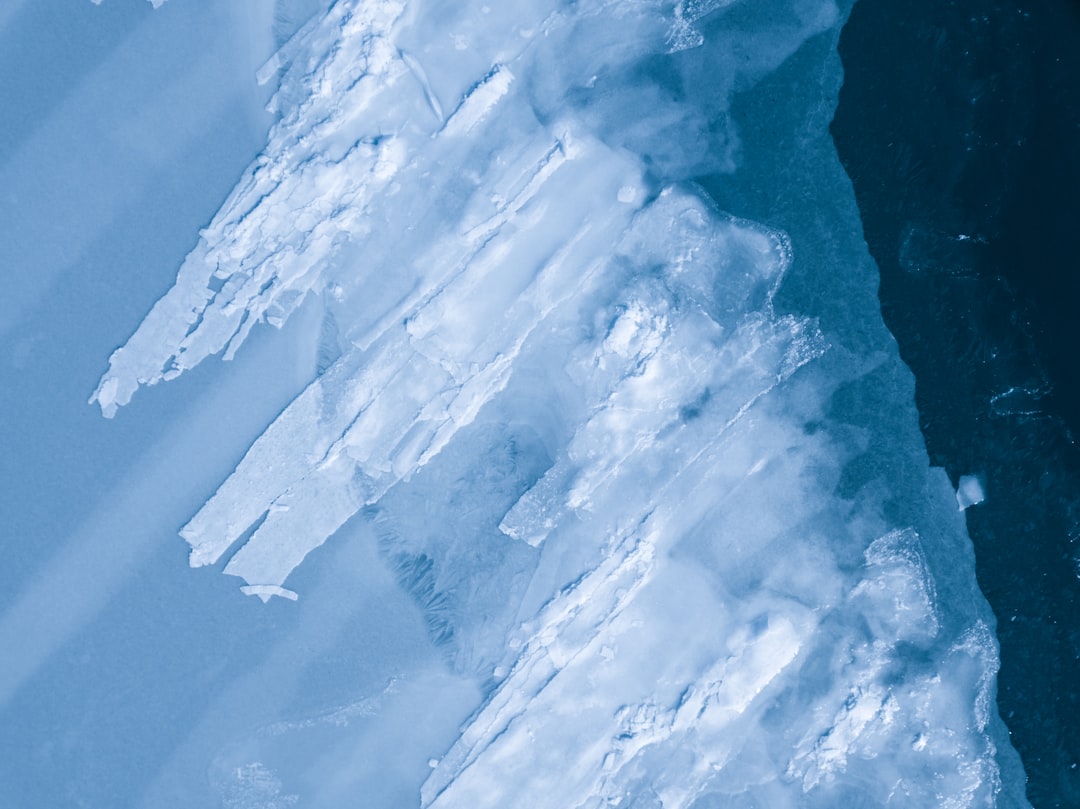The Drake Passage, a body of water that separates South America from Antarctica, has long captured the imagination of sailors and adventurers alike. This legendary route is renowned for its unpredictable weather, tumultuous seas, and breathtaking scenery. Stretching approximately 600 miles, the passage is often considered one of the most challenging maritime routes in the world.
For those who dare to navigate its waters, the Drake Passage offers not only a test of skill and endurance but also an opportunity to witness some of the planet’s most pristine and remote environments. Sailors who embark on a journey through the Drake Passage often find themselves in awe of its natural beauty. The stark contrast between the rugged coastline of Cape Horn and the icy expanse of Antarctica creates a dramatic backdrop for any sailing adventure.
The passage is not merely a route; it is a rite of passage for many sailors, symbolizing the spirit of exploration and the allure of the unknown. As they set sail into these storied waters, adventurers are reminded of the rich history that surrounds this legendary passage, making it a destination that beckons to those with a thirst for adventure.
Key Takeaways
- The Drake Passage is a legendary route for adventurous sailors, known for its challenging conditions and stunning scenery.
- Sailing the Drake Passage in January presents unique challenges, including rough seas, strong winds, and potential icebergs.
- The wildlife and scenery of the Drake Passage are breathtaking, with opportunities to see penguins, whales, and dramatic landscapes.
- Packing and preparing for a January sailing trip requires careful consideration of cold-weather gear, safety equipment, and emergency supplies.
- Choosing the right vessel for a January journey involves selecting a sturdy, well-equipped boat with experienced crew and a proven track record in challenging conditions.
The Challenges of Sailing the Drake Passage in January
Sailing the Drake Passage in January presents a unique set of challenges that can test even the most seasoned mariners. January falls within the Southern Hemisphere’s summer season, which may seem like an ideal time to navigate these waters. However, the reality is often far more complex.
The winds can be fierce, with gusts reaching up to 60 knots, and the waves can swell to heights that make even experienced sailors uneasy. The unpredictable nature of the weather means that conditions can change rapidly, requiring sailors to remain vigilant and adaptable. Moreover, the cold temperatures associated with this region can pose additional challenges.
Even in summer, temperatures can hover around freezing, particularly at night. This necessitates careful planning and preparation to ensure that sailors are equipped to handle the elements. The combination of strong winds, rough seas, and frigid temperatures creates an environment where only the most prepared and resilient sailors can thrive.
Those who choose to sail through the Drake Passage in January must be ready to face these challenges head-on, armed with both skill and determination.
The Wildlife and Scenery of the Drake Passage

One of the most captivating aspects of sailing through the Drake Passage is the opportunity to encounter a diverse array of wildlife. The waters are teeming with life, from playful dolphins to majestic whales that breach the surface in spectacular displays. Sailors may also spot various seabirds soaring overhead, including albatrosses and petrels, which are drawn to the nutrient-rich waters of the passage.
These encounters with wildlife add an exhilarating dimension to the journey, reminding sailors of the vibrant ecosystems that thrive in this remote part of the world. In addition to its rich wildlife, the scenery of the Drake Passage is nothing short of breathtaking. Towering icebergs drift lazily by, their brilliant blue hues contrasting sharply with the deep blue of the ocean.
The rugged cliffs and rocky outcrops along the coastline provide a dramatic backdrop for any sailing adventure. As sailors navigate through these stunning landscapes, they are often struck by a profound sense of solitude and connection to nature. The sheer beauty of the Drake Passage serves as a reminder of the planet’s untamed wilderness and the importance of preserving these fragile ecosystems for future generations.
Packing and Preparing for a January Sailing Trip
| Items to Pack | Quantity |
|---|---|
| Clothing | 7 sets |
| Toiletries | 1 set |
| Sunscreen | 1 bottle |
| Snorkeling Gear | 2 sets |
| First Aid Kit | 1 kit |
Preparation is key when embarking on a sailing trip through the Drake Passage in January. Sailors must carefully consider what to pack to ensure they are equipped for both comfort and safety during their journey. Layering is essential; thermal base layers, waterproof outer layers, and insulated jackets are crucial for staying warm in cold temperatures.
Additionally, sturdy footwear is necessary for navigating wet decks and rocky shorelines. Sailors should also pack essential gear such as gloves, hats, and sunglasses to protect against wind and sun exposure. Beyond clothing, sailors must also consider their provisions and equipment.
High-energy snacks and meals that are easy to prepare are vital for maintaining energy levels during long days at sea. A well-stocked first aid kit is also essential, as is safety equipment such as life jackets and flares. Furthermore, having reliable navigation tools—such as GPS devices and charts—can make all the difference in ensuring a safe passage through these challenging waters.
By taking the time to pack thoughtfully and prepare adequately, sailors can enhance their experience and increase their chances of success on this adventurous journey.
Choosing the Right Vessel for a January Journey
Selecting the appropriate vessel for sailing through the Drake Passage in January is a critical decision that can significantly impact the overall experience. Sailors must consider factors such as size, stability, and seaworthiness when choosing their boat. A sturdy vessel designed for rough seas is essential; many experienced sailors opt for larger yachts or expedition vessels that can withstand high winds and turbulent waters.
These boats often come equipped with advanced navigation systems and safety features that provide added peace of mind during challenging conditions.
Long days at sea can be taxing, so having adequate sleeping quarters and amenities can make a significant difference in overall morale.
Some vessels offer communal spaces where sailors can gather to share stories and enjoy meals together, fostering camaraderie among crew members. Ultimately, choosing the right vessel involves balancing safety, comfort, and performance to ensure an enjoyable journey through one of the world’s most iconic maritime routes.
Safety Measures and Precautions for Sailing in the Drake Passage

Safety should always be a top priority when sailing through the Drake Passage, particularly given its reputation for unpredictable weather and challenging conditions. Sailors must take proactive measures to ensure their safety and that of their crew. This includes conducting thorough pre-departure checks on all equipment and safety gear, ensuring that life jackets are readily available and in good condition.
Additionally, having a well-stocked first aid kit on board is essential for addressing any potential injuries or medical emergencies that may arise during the journey. Communication is another critical aspect of safety while sailing in these waters. Sailors should have reliable means of communication, such as satellite phones or VHF radios, to stay connected with other vessels or emergency services if needed.
Regularly checking weather forecasts and being prepared to alter course or seek shelter if conditions worsen is vital for ensuring safety at sea. By prioritizing safety measures and remaining vigilant throughout their journey, sailors can navigate the Drake Passage with greater confidence.
Navigating the Weather and Sea Conditions in January
Understanding weather patterns and sea conditions is crucial for anyone planning to sail through the Drake Passage in January. The Southern Hemisphere summer brings varying weather conditions that can change rapidly; thus, sailors must remain adaptable and informed throughout their journey. Wind patterns can shift unexpectedly, leading to sudden gusts that may catch unprepared sailors off guard.
It is essential for sailors to monitor weather forecasts closely and be ready to adjust their plans accordingly. In addition to wind conditions, sea swells can also pose significant challenges during this time of year. While January may offer relatively milder conditions compared to winter months, waves can still reach impressive heights due to strong currents and wind patterns unique to this region.
Sailors should familiarize themselves with local tidal patterns and currents to navigate safely through these waters. By staying informed about weather conditions and being prepared for changes at sea, sailors can enhance their chances of a successful voyage through this legendary passage.
The History and Significance of the Drake Passage
The Drake Passage holds immense historical significance as a key maritime route that has shaped exploration and trade over centuries. Named after Sir Francis Drake, who navigated these waters in the late 16th century during his circumnavigation of the globe, this passage has long been associated with adventure and discovery. Throughout history, it has served as a vital link between continents, facilitating trade routes that have contributed to global commerce.
Moreover, the Drake Passage has played a pivotal role in scientific exploration and research. Its unique ecosystems have attracted scientists studying climate change, marine biology, and oceanography. The passage serves as a natural laboratory where researchers can observe how marine life adapts to changing environmental conditions.
As such, it remains an area of great interest not only for adventurers but also for those dedicated to understanding our planet’s complex systems.
The Thrill of Sailing in the Drake Passage in January
For many sailors, there is an undeniable thrill associated with navigating the Drake Passage in January. The combination of breathtaking scenery, diverse wildlife encounters, and challenging conditions creates an exhilarating experience that few other sailing routes can match. As they sail through these storied waters, adventurers often find themselves immersed in a world where nature reigns supreme—a world where every wave tells a story and every gust of wind carries whispers from distant lands.
The sense of accomplishment that comes from successfully navigating this legendary route is unparalleled. Overcoming obstacles such as rough seas or sudden weather changes fosters camaraderie among crew members as they work together toward a common goal. Each moment spent sailing through the Drake Passage becomes etched in memory—a testament to resilience, teamwork, and an unwavering spirit of adventure.
Tips for Making the Most of a January Sailing Trip in the Drake Passage
To maximize enjoyment during a January sailing trip through the Drake Passage, sailors should consider several practical tips. First and foremost, maintaining flexibility in plans is essential; weather conditions can change rapidly, so being open to adjusting itineraries can lead to unexpected discoveries along the way. Additionally, taking time to appreciate moments spent at sea—whether it’s watching dolphins playfully surf alongside the boat or marveling at stunning sunsets—can enhance overall enjoyment.
Engaging with fellow crew members also enriches the experience; sharing stories around mealtime or participating in group activities fosters connections that last long after returning home. Lastly, documenting experiences through journaling or photography allows sailors to capture memories from their journey—moments that will serve as cherished reminders of their adventure through one of nature’s most awe-inspiring passages.
Reflecting on the Experience: Memories and Lessons from Sailing the Drake Passage in January
As sailors reflect on their experiences navigating the Drake Passage in January, they often find themselves filled with gratitude for both challenges faced and memories created along the way. Each wave conquered becomes a symbol of resilience; every encounter with wildlife serves as a reminder of nature’s beauty and fragility. The lessons learned during this journey extend beyond sailing skills—they encompass personal growth, teamwork dynamics, and an appreciation for our planet’s wonders.
Ultimately, sailing through the Drake Passage becomes more than just an adventure; it transforms into an unforgettable chapter in one’s life story—a testament to courage, exploration spirit, and connection with both nature and fellow adventurers alike. As they return home from this legendary route filled with memories etched forever in their hearts—sailors carry forward not only tales from their journey but also newfound perspectives on life itself.
The Drake Passage, known for its turbulent waters and unpredictable weather, presents a unique challenge for travelers in January. This month is part of the austral summer, which means slightly calmer seas and more favorable conditions for crossing. However, the passage remains one of the most formidable stretches of ocean, with strong winds and currents that can make the journey quite an adventure.
This article provides insights into the passage’s characteristics and what travelers can expect during their journey. For more detailed information, you can visit the article on MyGeoQuest’s website.
WATCH NOW! Drake Passage: Earth’s Deadliest Waters Revealed
FAQs
What is the Drake Passage?
The Drake Passage is the body of water between the southern tip of South America and the northern tip of the Antarctic Peninsula. It is known for its rough seas and challenging sailing conditions.
What is the weather like in the Drake Passage in January?
In January, the weather in the Drake Passage is typically characterized by strong winds, rough seas, and cold temperatures. Storms and low-pressure systems are common during this time, making for challenging sailing conditions.
What are the sea conditions like in the Drake Passage in January?
The sea conditions in the Drake Passage in January are often rough and choppy, with large swells and high waves. The combination of strong winds and cold temperatures can create challenging sailing conditions for ships crossing the passage.
What wildlife can be seen in the Drake Passage in January?
In January, travelers crossing the Drake Passage may have the opportunity to see a variety of wildlife, including seabirds such as albatrosses and petrels, as well as marine mammals like whales and seals. The nutrient-rich waters of the passage support a diverse ecosystem of marine life.
Is it safe to travel through the Drake Passage in January?
Traveling through the Drake Passage in January can be challenging due to the rough seas and strong winds. It is important for travelers to be prepared for the conditions and to choose a reputable and experienced tour operator or cruise line for their journey.
